Dustin Grella: Time & Movement

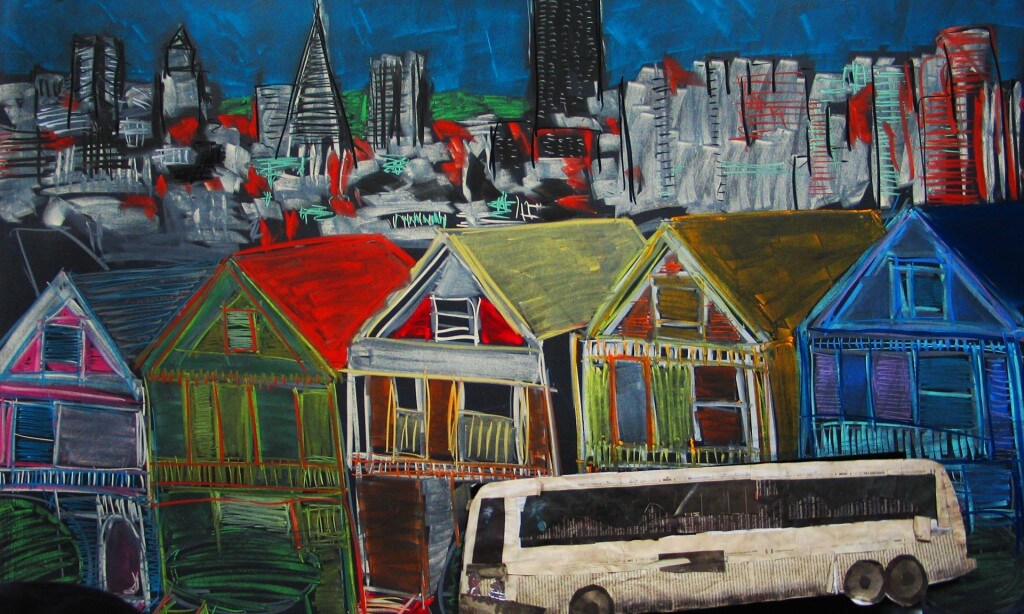
Dustin Grella is an animator and fine artist based in New York City. His work is time based and experiential, conceptually driven, and narrative. Founder of Dusty Studio and the 1800 Animation Hotline, he is prolific in amassing countless short online animation films.
Your animation feels very organic because you reveal the marks of your labor. How did you come to this style of animation and how much digital technology do you use in the process?

I came across this style of animation about eight years ago when I was trying to learn digital animation. On the computer you setup a few key frames and then hit the render key and let the computer do everything. I wanted to learn the art more intimately, so I attempted to do the rendering process myself. I set up a camera with a one minute timer, a chalkboard, some chalk and would put on an album and draw for the length of the album, with the camera’s timer snapping a photograph every minute, regardless of what was drawn. I was so much more excited about the result in comparison with anything I was getting from the computer. I started following this path. Since then I’ve incorporated the computer back into the process and use it to capture the images, edit, and render the hand drawn images. The computer is such a powerful tool, I felt like turning my back on it completely would be counterproductive. I have designed a custom camera system in my studio. The software has the capability to project one frame at a time, giving me the opportunity to sketch over the marks. I set the intervalometer on a digital still camera for sixty-seconds between each frame, recording whatever is in the frame at the time. This process forces me to continue drawing, and not get distracted by operating the camera or deciding when the next frame will be captured.
You balance your animation with conceptual fine art as well.
Similar to chess, I approach my creative process through a framework of rules and guidelines, helping to direct the progress. Comparable to Conceptual Art and Process Art of the late 1960’s and 1970’s, such as the work of Sol Legit and Robert Morris, but at the same time very different from LeWitt’s idea that “The process is mechanical and should not be tampered with. It should run its course,” in that my rules are set up in order to be broken and allow a more emotive quality into the work. Where as the hand of the artist is almost entirely removed from their work, I inversely set up systems more similar to those of Ray Johnson that practically showcase each and every stroke.
Tell me about the Prayers for Peace short documentary film and how visual, sound, and narration evolved during the process of making such a personal and captivating film about your brother’s death. How did archives play a part in your visuals and inspire your storytelling?
Prayers for Peace is a narrative stop motion animation confronting the memory of my younger brother, Devin, who was killed in the current conflict in Iraq. Four years have passed since my brother was killed when an IED was detonated beneath his diesel tanker while on a convoy to the active combat area of Fallujah. In this animation, I tried to stop and think about who my brother was, how I identified him, as well as work through issues of guilt for not thinking about him as often as I feel that maybe I should have. The piece reflects back on the days of the funeral. During the animation process, I tried to recall how my family and I felt. It’s an introspective journey, through the heart and soul of a difficult experience. Once the animation was finished, the conclusions I’d constructed in my head about the experience, its emotion and its impact on me, proved to be very different.
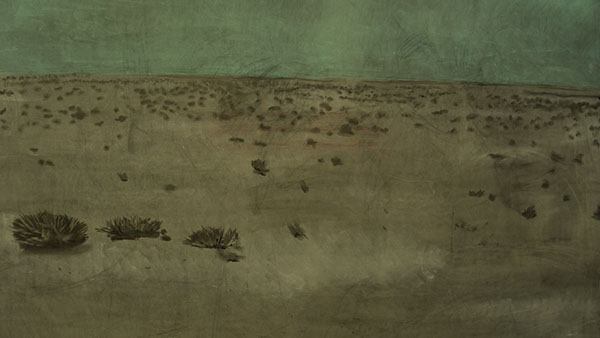

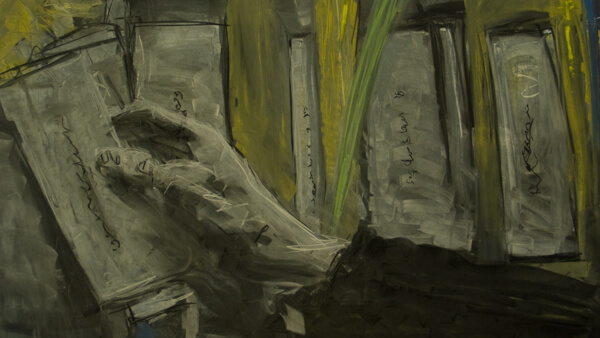
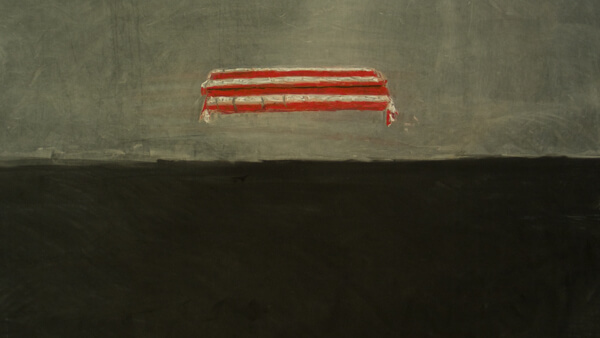
For the film, I created a stop motion animation by drawing with soft pastels on slate and recording the image as well as using a technique similar to rotoscoping, where each frame was projected onto the slate, drawn on top of, and the projection was removed before the image was recorded. I made the decision to rotoscope because I wanted the visual imagery to be easy to digest, to have the storyline be the primary focus. The narrative stems from a letter I wrote on December 7, 2007, as part of an ongoing letter writing project titled ‘Notes to Self’, involving over two thousand letters, written by and mailed to myself.
The materials of the pastels have impermanence. I draw and erase to represent the temporality of the physical body. The voiceover was the foundation for the project and was originally designed as a standalone piece. Most of the original footage is from videos and still images from Devin’s (my brother’s) laptop. The images are relatively simple so the viewer can focus on the progression of the drawing and follow the narrative, rather than using only images to tell the story.
Tooth Fairy by Robert Swartwood from Dusty Studio on Vimeo.
Tell me about the Animation Hotline and how it was originally conceived. How has it evolved and how do you choose which pieces to animate? What are the challenges of seemingly endless opportunities coming your way?
When I finished my previous film, Prayers for Peace, in May of 2009 and sent it to festivals and screenings – it was doing remarkably well. I did that for about a year, but then around the second year I started to feel this pressure to make a new film, a film that could outdo the previous film. I wanted it to be longer and more interesting and more beautiful, but honestly I didn’t have a story that could compare with something as personal and intimate as Prayers for Peace.That spiraled into the notion that I might not ever make another film, and when fear starts to creep into the creative process it manages to cripple everything. I started wondering if I was ever going to make another film and if this was just a one trick pony.
One day I got the idea that instead of trying to outperform the last film I should simply make something new, something small, it didn’t matter what it was really, just as long as it was finished. So I made a film in an afternoon about turning forty years old. It was so simple and easy and got me on the creative path again. I started thinking that maybe instead of trying to make a bigger, longer film, I could continue to make these short, micro animations. I could do the whole film, sound animation, render and post online in about one full day, and because the time commitment was so little, I could experiment more, take chances, make mistakes, feel free to create anything I wanted. So instead of going bigger, which is what I thought, as a filmmaker, I was required to do, I went short, tiny, micro.
Notes to Self Installation from Dusty Studio on Vimeo.
You sent yourself a letter over the course of a year. You drew a simple animation on each letter. Are you fascinated by time? How did your perception change when each letter was hung in a gallery space?
The letter writing project “Notes to Self” is really the foundation of my work. I’ve written a letter almost every day since April 2001 and still continue today, over 5000 letters later at this point. They were hung in a gallery in 2012, all still sealed, end-to-end, cornerto-corner, floor-to-ceiling on all four walls. For me, walking into that room was like walking into some sort of thought bubble, really hammering down this idea of how much can be accomplished over time with very simple actions. In 2002 I started writing myself a full letter every day. I’ve continued this process for over ten years now. Sometimes the letters are about 1100 words long, other times they are poems, and sometimes I add photographs or drawings or ticket stubs. It’s sort of a little personal time capsule. All the letters are still sealed and organized by date, and filed in boxes. I talk about this project because I’m acutely aware that even though I write every day, I only have an interesting story (interesting enough to do an animation about) roughly three times a year. So I knew I would run out of content in just a few animations.
So instead of trying to draw from personal experiences, I sent out an email and posted on my website asking people to please call my answering machine and leave me messages to animate. At first I was planning on making it mostly poetry and New York stories, but I quickly realized that the wider the range of stories and the more messages I received, the more interesting the project could become. The messages started coming in and I started animating.
As far as evolution goes, I’ve created what I call the Animation Hotline Hotspot, which is a gutted Quasar television and a hotline phone, as a physical object to collect messages. I’ve placed them in different locations, galleries, around Sundance Film Festival, and even in a friend’s bathroom. Oddly enough, the bathroom was the best location because people were able to watch the videos and felt comfortable leaving message without other people listening.
What is your work process like? How do you work in your studio and what is important to you when creating a visual for a piece of sound or interview clip?
As far as the studio process goes, I like to be comfortable because I also love spending a lot of time here. I’m actually sitting in the studio right now, listening to some music, snacking on some munchies. In my opinion it’s so miraculous that I’ve been able to find a life as an artist and that a life like this actually exists, I end up spending most of my time doing it. As far as coming up with visuals for the audio clips I enjoy incorporating elements of what I’ve been going through or experiencing in my day-to-day life. I try not to gettoo complex or heady and try to keep things as simple as possible.

New York City Tap Water is amusing and gives me a good laugh. It feel like a genuine commentary on consumer culture but the drawings make me nostalgic for New York and the various perspective of the city architecture and public space. Tell me what inspired the project and where you feel the concept led you?
The water bottle project started in 2006 when I went to a friend’s wedding. The bride nor the groom were drinkers so I thought an elegantly presented bottle of water would be, in many ways, more symbolic than champagne. Champagne is toasted because it is considered one of the more elegant alcoholic beverages, but water is pure and more necessary for life and survival, and what better symbol for the couples love and attempt at creating a life together? Plus, there was the whole Jesus turning the water into wine at the wedding thing, and well, you know, I enjoy a good metaphor.
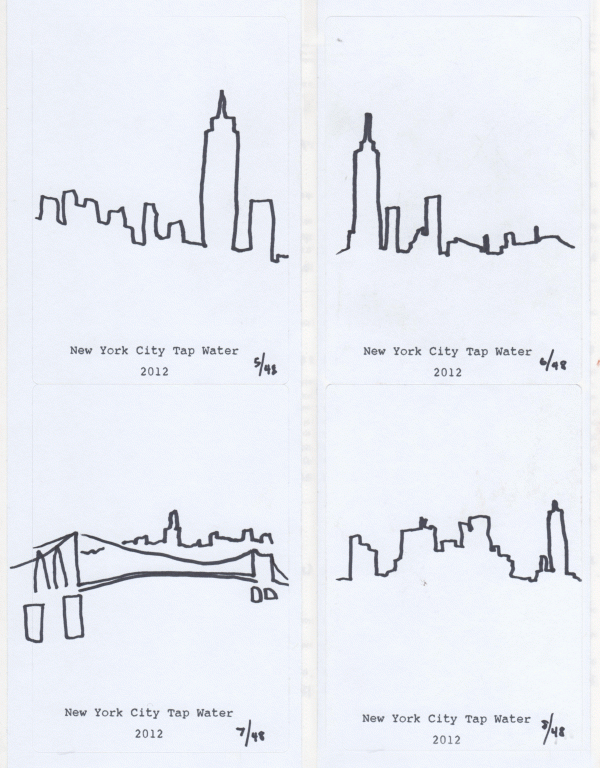
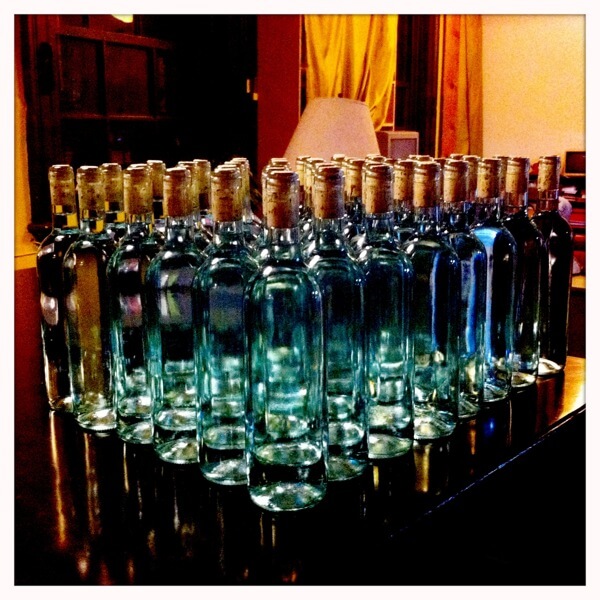
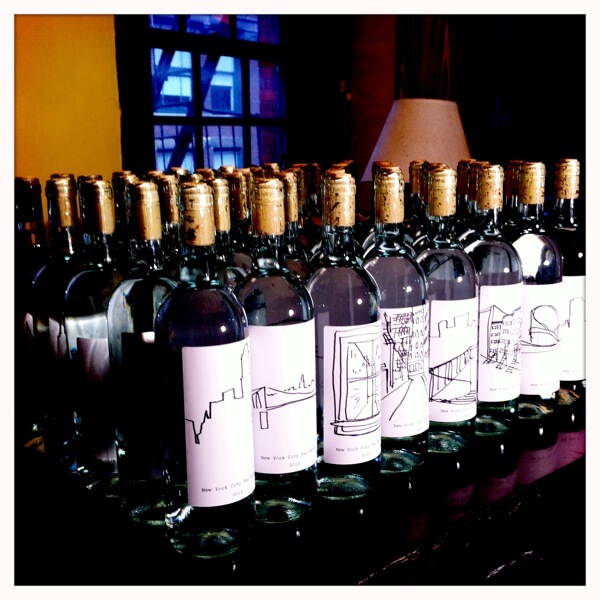
You are quite prolific. What do you have planned for the future?
I just finished a short film about traumatic events and its relation to the perception of time as told through animation that I’m looking for a venue to premier. It was written by the poet Miriam Atkin, read by the photographer Thatcher Keats, and is one of the more conceptually complete collaborations I’ve ever been a part of.
Responses